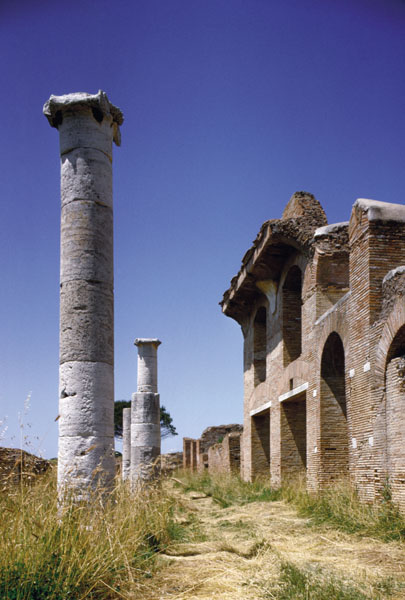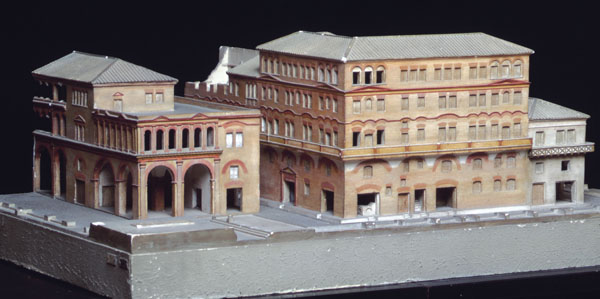Ancient Life: The High Life
Tenements on the Tiber

Traffic jams, slum landlords, waste, street crime, crowded apartments—these all-too-familiar blights of modern city life were not unknown to the ancient Romans.
During the reign of Augustus (27 B.C.–14 A.D.), Rome teemed with almost a million inhabitants, most of them living in multi-storied tenements called insulae. (Although nearly all traces of Rome’s insulae have vanished, ruins of insulae are still visible in nearby Ostia [above].) By 300 A.D., about 44,000 apartment blocks (see model below) housed almost the entire population of the city.

Shops were often located on the ground floor, with stone stairways leading to the apartments above. The living spaces got smaller as one climbed higher. Unlike Rome’s detached houses, insulae didn’t have running water, although there were occasionally group toilets on the ground floor. Although the apartment block’s central courtyard sometimes contained a cistern, tenants usually got water from public fountains.
Already a library member? Log in here.
Institution user? Log in with your IP address.

